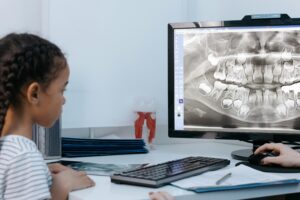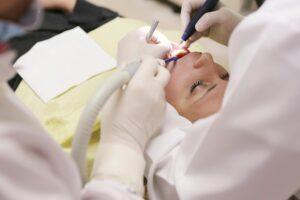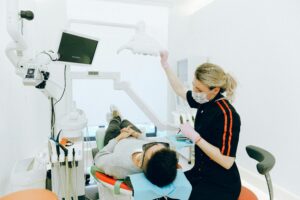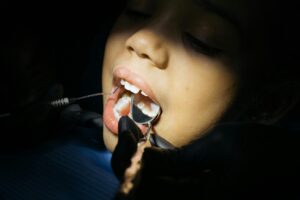Peri-implantitis is a serious concern for anyone with dental implants. It’s a condition that affects the tissues around a dental implant, causing inflammation and bone loss. If you’re wondering if peri-implantitis can be detected through an X-ray, you’re in the right place. This article will explain everything you need to know about how X-rays play a role in diagnosing peri-implantitis.
What is Peri-Implantitis?
Peri-implantitis is an infection that occurs around dental implants. It’s similar to gum disease but affects the tissue and bone around the implant. If left untreated, it can lead to the failure of the implant. Symptoms include redness, swelling, and bleeding gums. In severe cases, it can cause bone loss and implant mobility.
Importance of Early Detection
Detecting peri-implantitis early is crucial. The sooner it’s identified, the easier it is to treat. Regular dental check-ups are essential for anyone with dental implants. Dentists can catch signs of peri-implantitis early and take action to prevent further damage.
Can X-rays Detect Peri-Implantitis?
Yes, X-rays can help detect peri-implantitis. However, they have limitations. X-rays provide a two-dimensional image of the teeth and surrounding structures. They can show bone loss around the implant, which is a key sign of peri-implantitis. But, they might not show early inflammation in the soft tissues.
Types of X-rays Used
There are several types of X-rays that dentists use to diagnose peri-implantitis:
- Periapical X-rays: These X-rays focus on one or two teeth at a time. They can show detailed images of the bone around the implant. This helps in identifying bone loss.
- Panoramic X-rays: These X-rays provide a broad view of the entire mouth. They are useful for seeing the overall condition of the teeth and jawbone. While they may not show fine details, they can indicate general bone health.
- Cone Beam Computed Tomography (CBCT): This is a more advanced type of imaging. CBCT provides a 3D image of the mouth. It’s excellent for seeing both bone and soft tissue. This can be very helpful in diagnosing peri-implantitis.
What X-rays Show in Peri-Implantitis
When a dentist looks at X-rays for signs of peri-implantitis, they look for certain indicators:
- Bone Loss: One of the main signs of peri-implantitis is bone loss around the implant. X-rays can show the extent of bone loss, which helps in determining the severity of the condition.
- Changes in Bone Density: X-rays can reveal changes in bone density around the implant. This is another sign that peri-implantitis might be present.
- Implant Position: X-rays can show if the implant has shifted. Movement of the implant can indicate a problem with the surrounding bone and tissue.
Limitations of X-rays
While X-rays are useful, they have their limitations:
- Early Detection: X-rays might not show early signs of peri-implantitis. Early inflammation in the soft tissues might not be visible on an X-ray.
- Two-Dimensional: X-rays provide a flat image of a three-dimensional structure. This can sometimes make it difficult to see all aspects of the bone and tissue around the implant.
- Radiation Exposure: Although the amount of radiation from dental X-rays is low, repeated exposure should be minimised. Dentists use X-rays only when necessary to reduce radiation exposure.
Other Diagnostic Tools
In addition to X-rays, dentists use other tools to diagnose peri-implantitis:
- Clinical Examination: Dentists examine the gums around the implant for signs of redness, swelling, and bleeding. They also check for any discharge, which can indicate infection.
- Probing: Dentists use a small instrument to measure the depth of the pockets around the implant. Deep pockets can be a sign of peri-implantitis.
- Bacterial Tests: Sometimes, dentists take samples from around the implant to test for bacteria. High levels of certain bacteria can indicate peri-implantitis.
Treatment Options
If peri-implantitis is detected, treatment options include:
- Cleaning: The dentist will clean the area around the implant to remove bacteria and plaque.
- Antibiotics: In some cases, antibiotics may be prescribed to fight the infection.
- Surgery: For severe cases, surgery may be needed to remove infected tissue and regenerate lost bone.
Preventing Peri-Implantitis
Prevention is always better than treatment. Here are some tips to prevent peri-implantitis:
- Good Oral Hygiene: Brush and floss regularly to keep your teeth and gums healthy.
- Regular Check-ups: Visit your dentist regularly for check-ups and cleanings.
- Avoid Smoking: Smoking can increase the risk of peri-implantitis and other dental problems.
Conclusion
In conclusion, X-rays are a valuable tool in diagnosing peri-implantitis. They can show bone loss and changes in bone density around the implant. However, they have limitations and should be used alongside other diagnostic methods. Early detection and treatment are crucial to prevent serious complications. By maintaining good oral hygiene and visiting your dentist regularly, you can keep your dental implants healthy and avoid peri-implantitis.
Schedule Your Appointment Today
At GK Dental Implant & Cosmetic Clinic, we are dedicated to providing the best care for your dental implants. If you suspect you have peri-implantitis or need a regular check-up, don’t wait. Book an appointment with us today. Our experienced team, including an NHS dentist in Dumfries, is ready to help you maintain a healthy, beautiful smile. Contact us now for personalised care and expert advice.
Frequently Asked Questions
What are the signs of peri-implantitis on an X-ray?
Key signs include bone loss and changes in bone density around the implant, indicating potential peri-implantitis.
Which type of X-ray is best for detecting peri-implantitis?
Cone Beam Computed Tomography (CBCT) provides detailed 3D images, showing both bone and soft tissue changes around implants.
Do X-rays show soft tissue inflammation?
No, X-rays primarily show bone structures. Soft tissue inflammation is better assessed through clinical examinations and probing.
Are dental X-rays safe for frequent use?
Dental X-rays use low radiation. Dentists minimise exposure and use them only when necessary for diagnosing conditions like peri-implantitis.
How often should I get X-rays if I have dental implants?
Regular dental check-ups typically include X-rays as needed. Your dentist will determine the frequency based on your specific situation.



